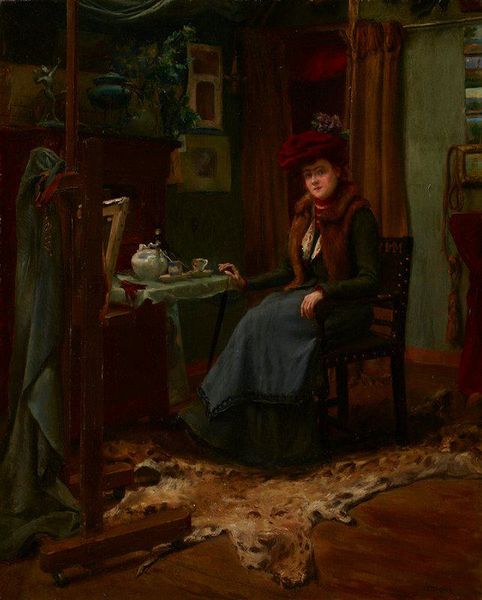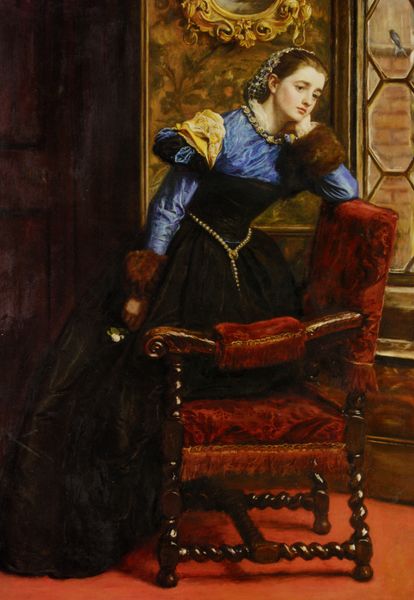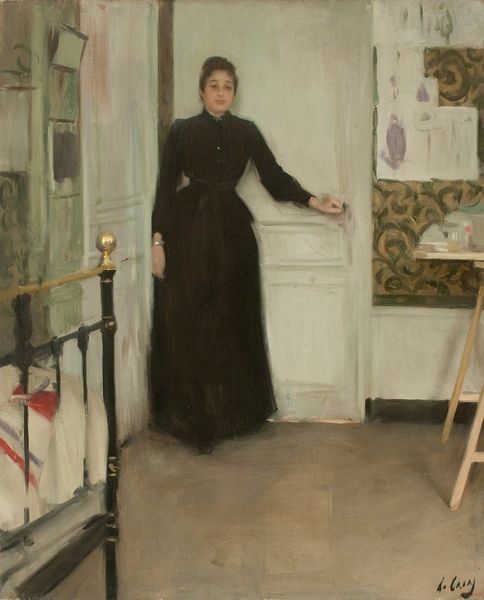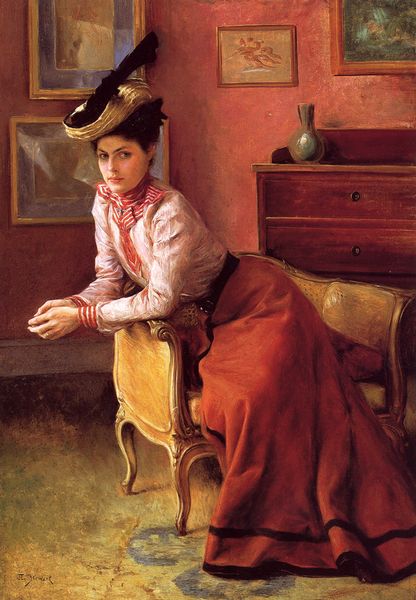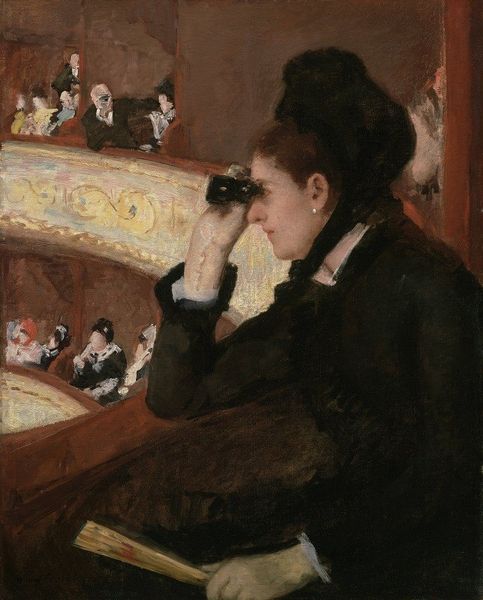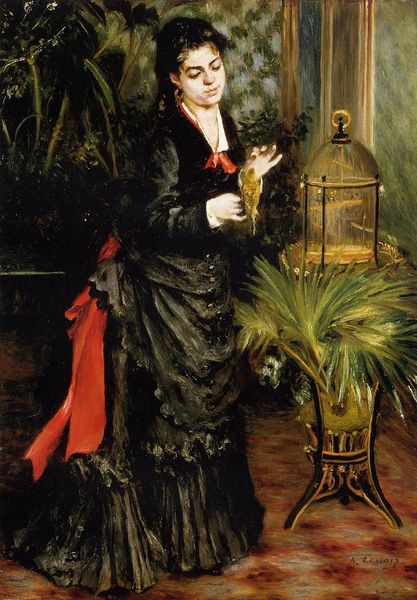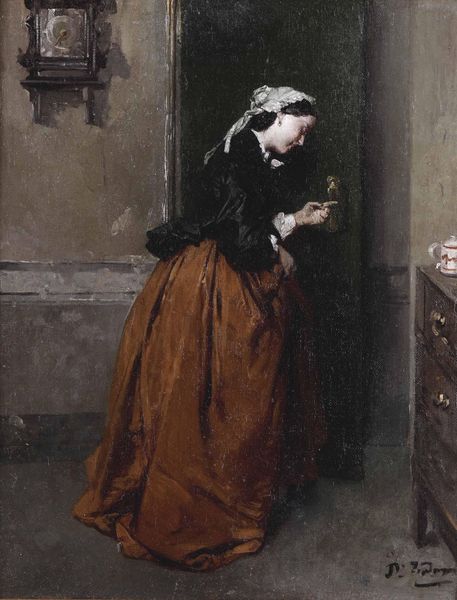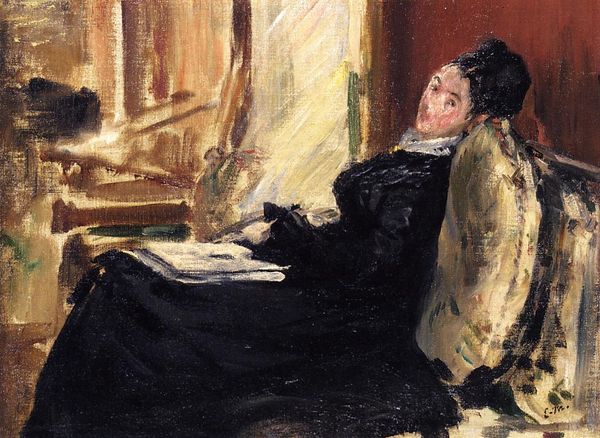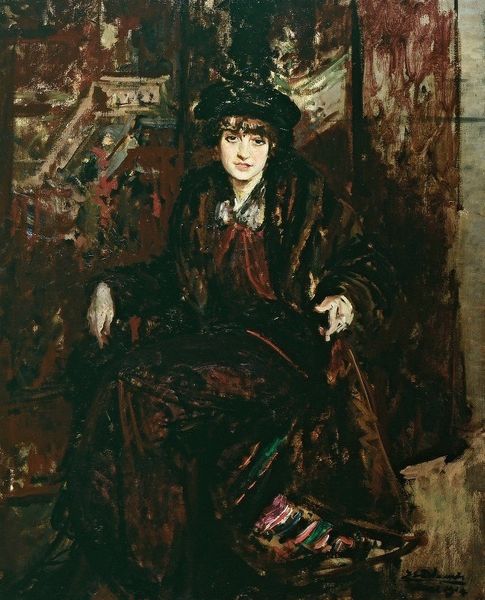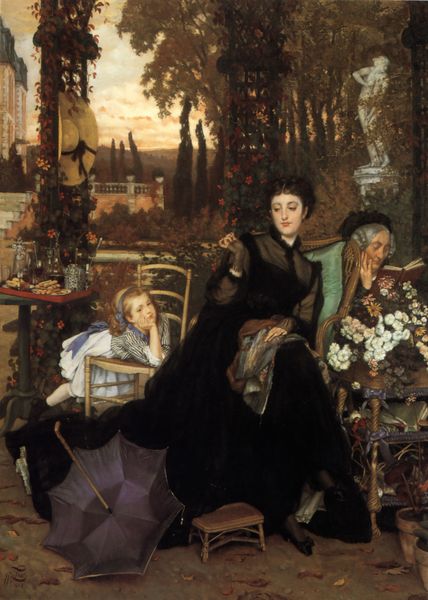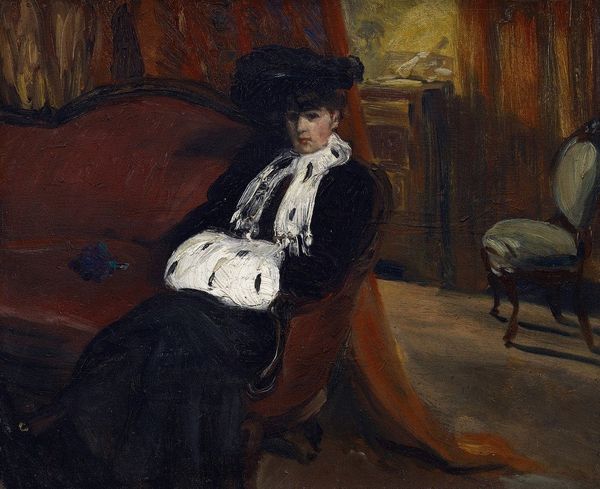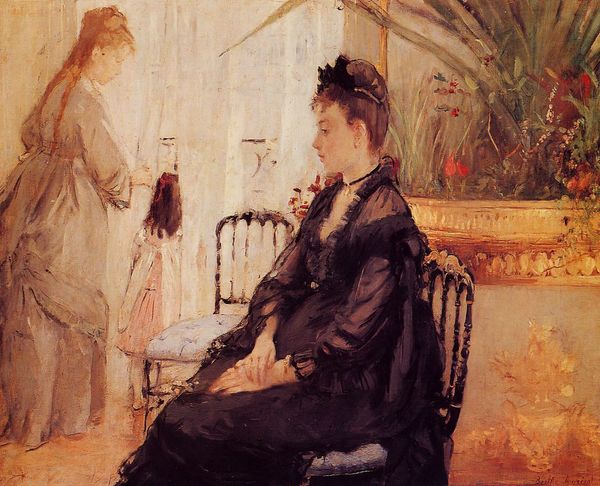
painting, oil-paint
#
portrait
#
painting
#
oil-paint
#
genre-painting
#
history-painting
#
realism
Copyright: Public domain
Editor: We're looking at James Tissot's "In Church," painted in 1869. It's an oil painting depicting a woman standing in a church, and I find the scene rather unsettling. There’s something about the empty chairs and the woman's stern gaze that creates a strange atmosphere. What do you see in this piece? Curator: Tissot's "In Church" is indeed compelling. What strikes me most is its commentary on social roles and the performance of piety within a specific historical context. The painting was made in 1869; how do you see it engaging with that time? Editor: Well, I notice that she looks a bit detached, unlike the other churchgoers. Curator: Exactly! Think about the role of women in Victorian society, expected to be paragons of virtue and devotion. Tissot subtly critiques this ideal. She is present, yet absent. The setting also becomes a stage. Notice the architectural details like the ornate confessional booth on the right. Churches in 19th century France were very much locations of commerce, matrimony, class distinction and political importance. Where do you see other such societal influences? Editor: Perhaps her dress. Her fashion sense suggests she belongs to the upper class, different than the other people present. Is Tissot saying the space itself is performative for its attendees? Curator: Precisely. Churches were increasingly politicised. He is interested in portraying how the elite used public spaces like this. Her detachment mirrors a broader critique of social rituals becoming empty displays of status. The rise of secularism shaped people's perceptions. Editor: I never thought about that aspect, of the church also becoming a show. Now I appreciate the image and its context. Thank you! Curator: It’s fascinating how Tissot used his skills as an artist to capture more than just appearance, isn't it? These types of insights broaden our interpretation.
Comments
No comments
Be the first to comment and join the conversation on the ultimate creative platform.
